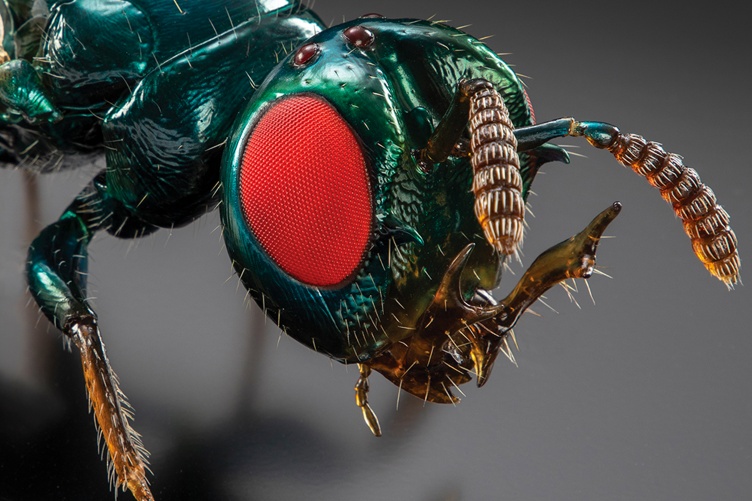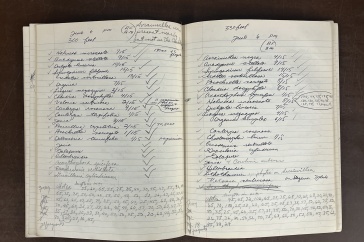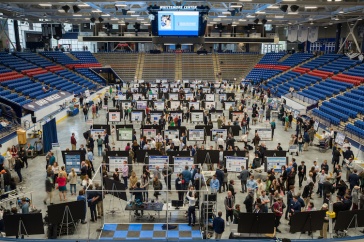
Meticulously detailed model of a Chalcidoid wasp based on 3D images produced the research team.
A study of a previously undescribed group of parasitic wasps has uncovered new information about their mandible, or jaw, function. The discovery is an intriguing development in insect evolution — one that scientists believe led to the remarkable diversification of the Chalcidoidea superfamily of wasps.
The team’s work, which includes contributions by István Mikó, the manager of the UNH Collection of Insects and Other Arthropods, was recently published in the Proceedings of the Royal Society.
Mandibles — the set of jaws near an insect’s mouth — are commonly used to grip, bite and cut food and defend against predators or rivals. The earliest known insects had mandibles that rotated inside a single ball-and-socket joint — like your arm and leg — and had highly flexible movement. Then, beginning about 400 million years ago, the ancestors of modern insects developed mandibles with two joints that restricted their movement to a single plane but gave them a more powerful bite and, in turn, access to new food sources.
“This is one of the key innovations that triggered the extreme diversification of insects, which now make up three-quarters of all animal species on the planet,” says Mikó.
But this change did not offer the same advantages to the predominantly parasitoid species that make up the Chalcidoidea family of insects because the main function of their mandibles is not feeding. Adults use their jaws to break out of the hosts in which they develop.
“These are tight spaces that require complex movement rather than brute force to chew their way out,” says Mikó. “So, unlike other insect species, the strong, single plain movement of the mandibles had no evolutionary advantage.”
Thus, until now there was no convincing explanation for the Chalcidoidea superfamily’s — which includes an estimated 500,000 insect species — own unparalleled diversification.
But recently, Mikó and his collaborators, which includes Thomas van de Kamp, Daria Bajerlein, Tomáš Faragó, Rebecca Spiecker, Elias Hamann and Tilo Baumbach from the Karlsruhe Institute of Technology; Arnold H. Staniczek, Lea Hagelstein, Petr Janšta and Lars Krogmann from the State Museum of Natural History Stuttgart; and Benjamin Eggs from the University of Tübingen, discovered something unusual about a Chalcidoid species. Using a form of 3D modeling called high-throughput synchrotron-based tomographic microscopy, they found that at some point many millions of years ago these wasps returned to the single-jointed mandible like the most primitive insects.
“We discovered that these insects gave up the ability of the powerful bite for more versatility, and this evolutionary reversal most likely triggered their extreme diversification,” says Mikó.
The work, he says, also highlights the need to study in detail more of the 4 million still undescribed insect species — and to re-examine insect systems thought to be well-known.
Natural history collections like the UNH Collection of Insects and Other Arthropods are an important asset to the work being done to preserve and document the diversity represented by the millions of insect species.
“Specimens deposited in a natural history collection allow researchers to explore not only thousands of unknown species but also their myriad of undiscovered biomimetic potential,” says Mikó, referring to the use of the natural world to help solve complex human problems. Well-known examples are the small hooks at the end of burr needles that inspired Velcro and the webbing pattern of a spider web that the automotive industry used to create windows that crack but don’t shatter. For their part, parasitoid wasps have inspired the design of flexible, ultra-thin and steerable needle used in surgical procedures.
As part of the project, artist Julia Stoess created a meticulously detailed model of a Chalcidoid wasp based on 3D images produced the research team. It is on display in the State Museum of Natural History Stuttgart in Germany.
The UNH College of Life Sciences and Agriculture is the oldest of five colleges at the University of New Hampshire. We are scientists, scholars and educators who combine teaching with a passion for research and public service. Our work to understand the nature of biological systems, manage and conserve natural resources, improve agricultural profitability and sustainability, enhance health and nutrition and foster economic development has helped earn UNH nationwide recognition as a top-tier land, sea and space grant university.
-
Written By:
Sarah Schaier | College of Life Sciences and Agriculture



















































